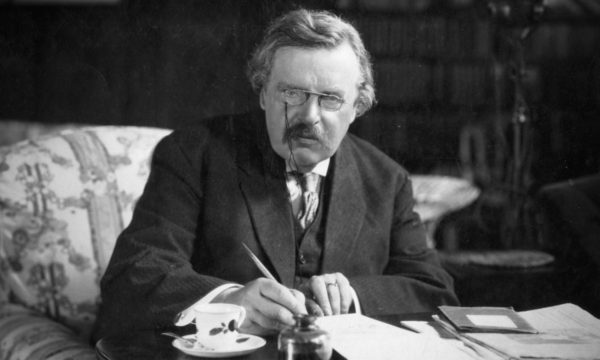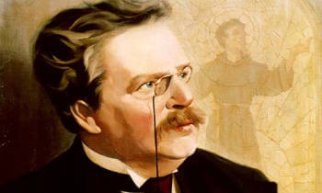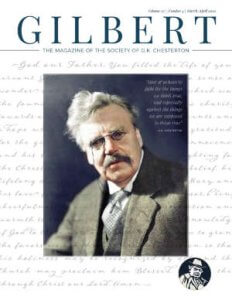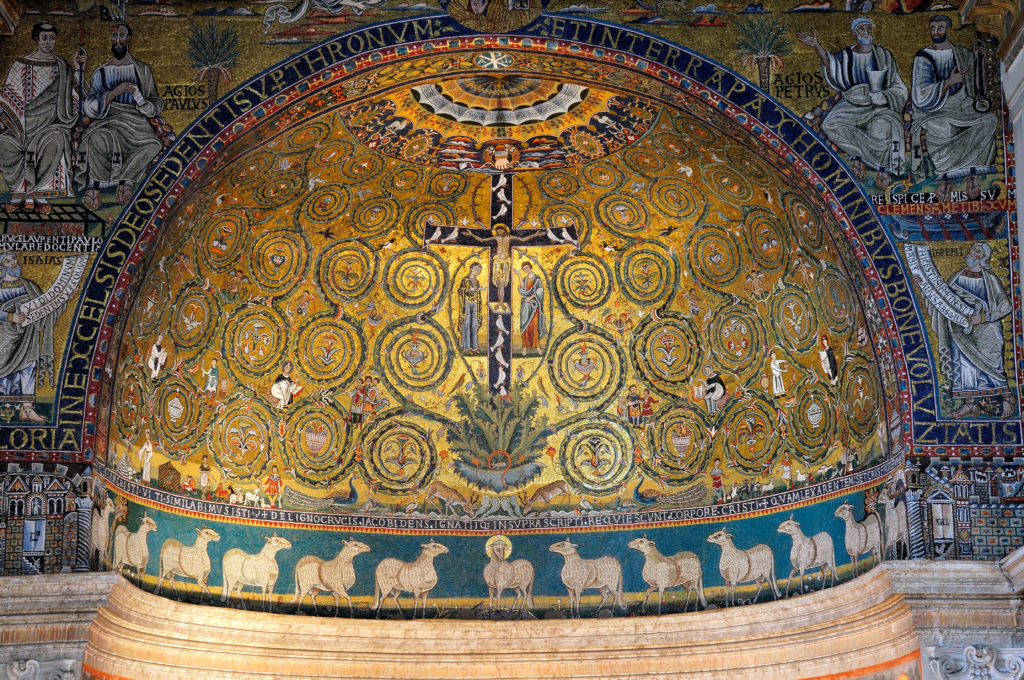The Apse of the Church of San Clemente
About the Image
Chesterton traveled to Rome in 1929 to attend the beatification of the English Martyrs. He reflected on his experiences in his book, The Resurrection of Rome. In it, Chesterton describes the great mosaic apse in the Basilica of San Clemente as a vibrant representation of the vitality of Christianity.
Read the excerpt from the Resurrection of Rome below.
The Resurrection of Rome
by G.K. Chesterton
There is…in…one place (in Rome) an older type of symbolism, in which the real nature of Rome’s triumph is conveyed…. It is traced in mosaic in the apse of the ancient church of St. Clemente, one of the most remarkable and yet one of the most typically Roman of churches; for it descends below into a stratification of dead churches and pagan foundations. Under all there is a dark cavern carved with the mystery of Mithras; and I have heard, standing before that strange altar, the noise of the Lost Waters of Rome. But the upper church, in which I have heard Mass, is in more ways than one the crown of the revival and triumph of Christian things; and the old decoration of the apse expresses the idea with a symmetry that is almost startling.
The apse is a half-moon of gold on the usual pattern; but at the top there is a cloud out of which comes the hand of God above the crucifix. It does not merely bless it or even merely rest on it. It seems to take the cross as if by the cross-hilt and thrust it like a sword into the earth below. Yet in one sense it is the very reverse of a sword, since its touch is not death but life; life springing and sprouting and shooting into the air, that the world may have life, and that it may have it more abundantly.
It is impossible to say too much of the fruitful violence of this effect. It is not the normal groping of roots or branches. It is more like the blood of the earth spurting instantly from its arteries at the first wound. The living shoots go whirling away into space covering the whole background with their gyres and eddies; as if to lasso the stars. This antique design does really achieve what so many Futurist experiments or crazy jazz decorations have attempted; to make a dynamic diagram and to express suddenness in a pattern. The very disproportion between the long loops and circles sprawling everywhere and the slender cross at whose touch they have leapt into life, emphasizes with energy the power of that magic wand. Curled inside each of the circles, as in something that is at once a nest and a new and separate world, is a bird, to express the universal birth of life; and each bird is different in species or colour. No one but a madman could stand before it and say that our faith is anti-vital or a creed of death. And there is one last touch, which has already been remarked by many; that the face of the Crucified, which in most images is naturally tragic, is in this case radiant and like the sun at noon; or like the words that have no need to be written here in any motto or inscription: I am the Resurrection and the Life.
From “The Holy Island,” The Resurrection of Rome. Read the essay in the Collected Works, Vol. XXI.





